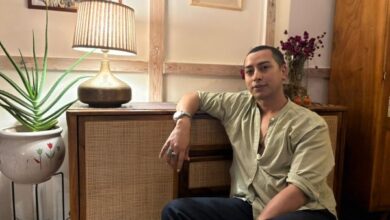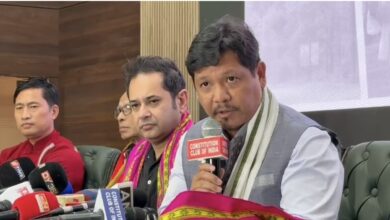Camelia thy name is tea
Tracing the journey of tea to Assam & a flourishing brew in NE

 The story of tea is really fascinating. Tea was originally used as medicine, food and then as a beverage. As the legend goes, around 2737 BC, the Chinese emperor Shen Wung was sitting under a tree while his servant was boiling drinking water for the emperor. As if by destiny, some leaves were blown into the water. The emperor, himself a herbalist, tried this blending of boiled water and the leaves fallen from the tree. He found it to be an amazing drink.
The story of tea is really fascinating. Tea was originally used as medicine, food and then as a beverage. As the legend goes, around 2737 BC, the Chinese emperor Shen Wung was sitting under a tree while his servant was boiling drinking water for the emperor. As if by destiny, some leaves were blown into the water. The emperor, himself a herbalist, tried this blending of boiled water and the leaves fallen from the tree. He found it to be an amazing drink.
During the Han dynasty, tea was used as a medicine in China. It is believed that during the Teng dynasty, this aromatic beverage was drunk on social occasions.
In the 16th century, Portuguese merchants came in contact with tea in China and named it cha. When tea found its way to Europe, it was the Dutch who traded the commodity and called it thee, which became tea in English, thé in French, thee in German and tè in Italian and Spanish.
The hardest of all the subtropical crop plants, tea, belongs to the family of a flowering plant, Theaceae, comprising shrubs and trees. Camelia sinensis or tea belonging to the Theaceae family is a native of China. Camelia sinensis is a species of evergreen shrub. Its leaves and buds are used to produce the popular aromatic beverage, tea.
Various studies have revealed that it can boost one’s immune system and prevent heart disease.
Tea was introduced in India by the British to counter the monopoly of the Chinese.
Assam valley came under British contact when the Ahom king Gourinath Singha sought the help of Lord Cornwallis to quell the Moamaria uprising. That was how gradually the British developed an interest in Assam.
It was Robert Bruce who, in 1823, discovered tea plants growing wild in the Upper Brahmaputra Valley. Camelia sinensis assamica variety with larger leaves grows profusely in warm and moist climate of upper Assam. Robert Bruce, a Scottish arms dealer in the North East Frontier of India, introduced tea plantations in Assam.
Though East India was credited with popularising tea but it was Maniram Dutta Barua, popularly known as Maniram Dewan introduced tea to the British. Maniram Dewan, an Assamese nobleman was one of the first people to establish a tea garden in Assam.
Bruce, who was an agent of the Ahom king Rudranath Singha, learned from Dewan that Singphos of Arunachal Pradesh were growing tea, which was not known to the outside world. In 1823, Bruce met the Singpho chief at Garhgaon who agreed to supply some samplings to him. It was Bruce who introduced the tea bushes from Assam were introduced in Europe.
Charles Alexander Bruce, the younger brother of Robert Bruce received some samples from Robert and subsequently to David Scott, the Commissioner of Assam.
Later, Charles Bruce initiated the cultivation of tea in Assam. Unfortunately, Bruce died in 1824. In 1837, it was in Chabua that the English established the first tea garden in upper Assam.
Assam tea company began its commercial production of tea in 1840. One of the oldest tea companies in the world, Duncan Tea, was set up by two Duncan Brothers, Walter and William, about 150 years ago when they came from Glasgow to set up their business in Calcutta in 1859 as Duncan Brothers.
To mark the 200 years of Assam tea or Camelia sinensis assamica, the Government of Assam has chalked out elaborate plans organising road shows in major cities across the country. The state government will celebrate this historical event in a grand manner.
The idea of adding a dairy product to a cup of tea is thought to have originated in the Tibetan communities who used to add butter made from yak milk into their cups to add some extra calories needed for the cold winters high up in the mountains.




